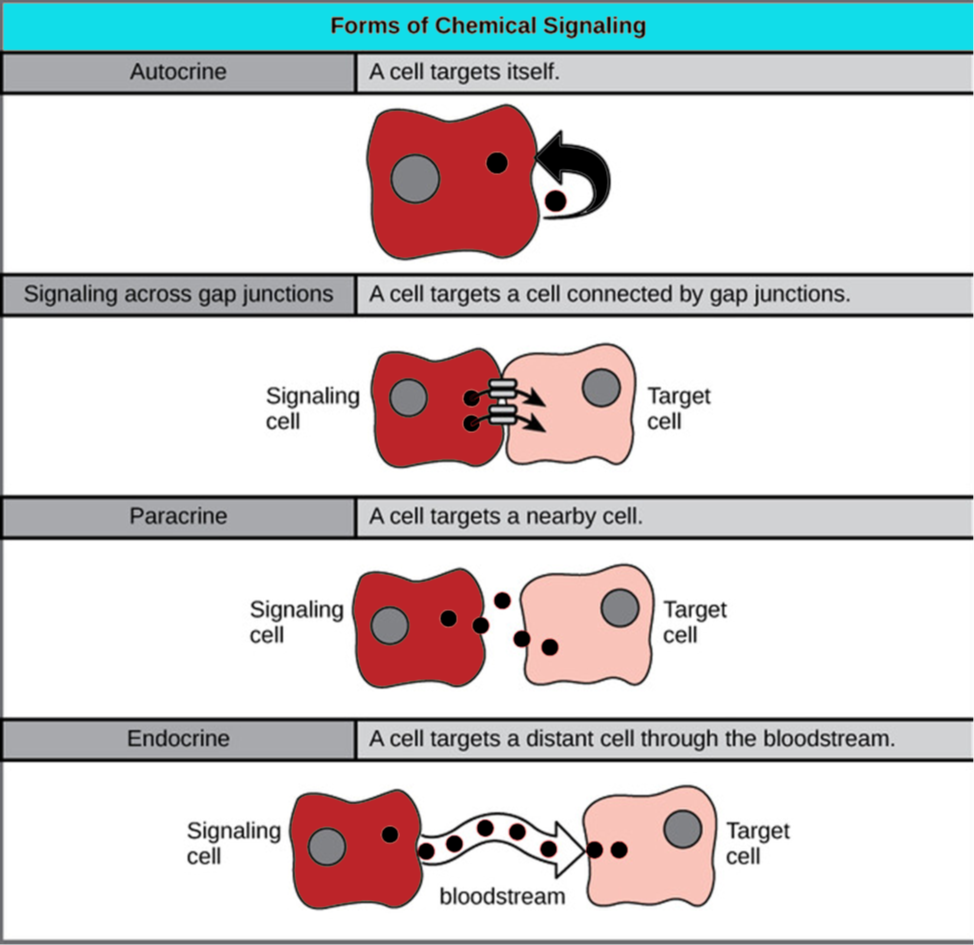Cell signaling is a process for the cells to communicate with each other within the multicellular organism. The cell can either self-communicate or communicate to distance(other cells). A signal is a molecule that binds to a specific receptor and stimulates an action/mechanism.
There are various possible types by which cells can communicate with each other.
Types of cell signaling
- 1. Paracrine signaling
- 2. Autocrine signaling
- 3. Endocrine signaling
- 4. Juxtacrine signaling
Paracrine signaling
This type of signaling occurs between local cells a cell releases a signal and it binds to the receptor of the adjacent cells at a short distance.
Synaptic signaling is an example of paracrine signaling.
Autocrine signaling
In autocrine signaling, the target cell and the release of the signal occur in the same cell. This type of cell signaling helps to protect the cell from pathogen and the cell undergoes PCD(programmed cell death).
Endocrine signaling
Endocrine signaling occurs between distant cells. This type of signaling has a slow response but it’s a long-lasting response. Usually, the signaling molecules in this type are hormones that move to target through the bloodstream. These signals are produced by endocrine glands.
Juxtacrine signaling
This type of signaling occurs by transferring the signaling molecule across the gap junction of the neighbor cell.